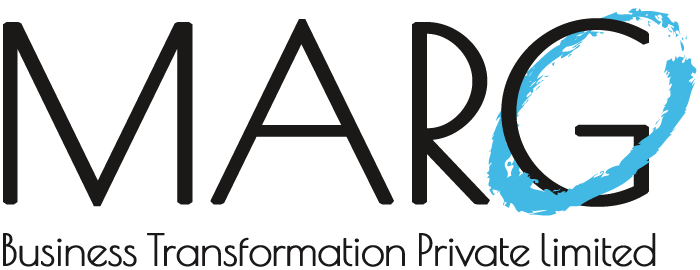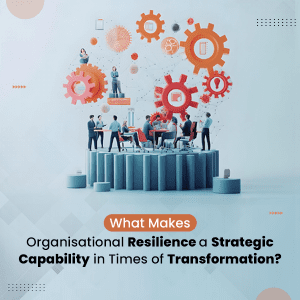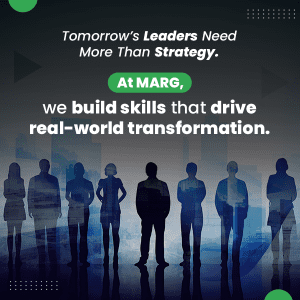
You already excel at creating impactful communications, but what happens when you’re tasked with leading a full-scale change initiative? How do you make that transition? This blog will guide you through the steps to take as you embrace your new responsibilities and successfully lead change efforts.
The Foundations of Change Management
Change management goes beyond simple communications. It’s a structured methodology designed to lead the human aspect of transformation to meet your organization’s goals. This process is about guiding people from the current situation to the future state that the organization envisions.
For instance, if your company is rolling out a new enterprise resource planning (ERP) system or introducing artificial intelligence (AI) tools, you’ll need to ensure that employees adopt these systems, as well as the processes, roles, and behaviors that come with them. Successful change only happens when people embrace and utilize the change.
Adopting a solid change management strategy increases engagement, boosts adoption, and enhances the likelihood of project success. According to Prosci’s research, projects with excellent change management practices are more likely to achieve their objectives.

Bridging Communications Expertise with Change Management Methodologies
Even the most skilled communicators can feel unequipped when tasked with leading high-risk changes. Leading change management effectively requires a structured, methodical approach.
Common Challenges for Communications Professionals:
- More Responsibilities, Less Time
Support functions across organizations are shrinking, and communications professionals are no exception. Frequently, they are asked to handle both communication and change management duties. This leaves little time and resources for thorough change management, resulting in suboptimal outcomes. - Limited Change Management Training
Communicators are always eager to take on fresh challenges, but many are not provided with the tools or training needed for effective change management. Enthusiasm alone won’t compensate for the skills gap. Without proper change management training, projects may face resistance, missed deadlines, and other setbacks. - Uncertainty on Where to Start
Many communications professionals simply don’t know where to begin when it comes to change management. While some may have attended courses or webinars, there is often a lack of structured methodology to implement.
Using a well-established change management approach like Prosci’s can help bridge the gap, offering tools and guidelines that keep your project on track.
Practical Steps to Embrace Change Management
Successfully transitioning into a change management role involves developing new skills and adopting a structured methodology. Here’s how you can get started:
1. Understand the People Side of Change
Leaders often concentrate heavily on the technical elements of organizational changes, sometimes overlooking how these shifts impact their teams and the way they work. It’s essential to recognize that the success of any project relies on how well individuals can embrace new procedures, systems, roles, behaviours, and more.
For successful outcomes, change managers work closely with project managers and developers to ensure a seamless integration between the technical and human sides of change.

Change often brings uncertainty and challenges that can leave people feeling overwhelmed. It evokes a wide range of emotions, from excitement and anticipation to fear and frustration. Without addressing these emotional responses, individuals may resist, jeopardizing the success of the project and potentially increasing turnover.
Using a change management model like the Prosci ADKAR® Model allows you to guide individuals through the transition effectively. It helps identify obstacles that prevent progress and offers strategies to overcome them.
Built on the principle that organizational change occurs when individuals adapt, the ADKAR Model enables you to:
- Prioritize people in the change process
- Focus on achieving desired outcomes
- Track and measure success
- Make necessary adjustments to enhance results
2. Utilise a Structured Change Management Approach
A structured change management methodology offers a systematic approach, shared language, quality standards, and activities aimed at ensuring successful change. Over 25 years of Prosci research highlights that effective change management significantly boosts project success rates.
Linking Change Management Effectiveness to Results
The Prosci Methodology incorporates the Prosci Change Triangle (PCT) Model, ADKAR Model, and 3-Phase Process. Here’s a brief breakdown:
- The PCT Model provides a framework for assessing project health and how different elements interact. Applied throughout a project’s lifecycle, it helps identify and manage key risks that could impact success.
- The ADKAR Model establishes a universal language that guides individuals through change while addressing obstacles that could hinder progress. ADKAR change management serves as both an assessment tool and a straightforward roadmap for individual change.
- While ADKAR focuses on individual transitions, the 3-Phase Process expands its application to an organizational level, ensuring alignment with broader goals. This process outlines the activities that change management professionals and project teams should undertake to achieve successful outcomes, ensuring clarity on objectives, affected stakeholders, and necessary actions.
3. Engage Sponsors and Leader
Senior leaders play a pivotal role in the success of any change initiative. As a change manager, it’s your responsibility to prepare and support them in their roles. Ensuring they remain active and visible throughout the change process is critical. Encourage them to build coalitions and communicate the importance of change to their teams.
4. ABCs of Sponsorship
As a change manager, one of your key responsibilities is to ensure that sponsors and senior leaders are prepared for their roles in engaging with employees. Research from the 12th Edition of Best Practices in Change Management highlights that active and visible sponsorship is the most critical factor in driving change management success.
You can support sponsors by guiding them through the ABCs of Sponsorship, helping them effectively fulfill their roles.
A – Active and Visible Participation throughout the Project | Champion the change, allocate necessary funding for change activities, and support the team.
B – Build a Coalition of Sponsorship | Mobilize other key business leaders and stakeholders so they can advocate for the change and legitimize it in their part of the organization.
C – Communicate, Support, and Promote the Change to Impacted Groups | Communicate the importance of the change from a leadership perspective. Directly engage impacted employees.
5. Leverage Your Communications Expertise
You’ve built your career on crafting impactful communications. To ensure success in change management, it’s essential to align your communication skills with change management best practices.
One key aspect is utilizing the right messengers. Research indicates that employees prefer hearing about changes from both their executive leaders and direct supervisors.
Blog Images-PreferredSenders-Callouts (2)
Key Pitfalls to Avoid in Change Communications
Mistakes such as under-communicating, delivering inconsistent messages, or disregarding feedback can quickly undermine your efforts. To avoid this, ensure communication is clear, consistent, and delivered through the right channels at the right times, while being flexible enough to make adjustments when necessary.
Failing to address employee concerns can lead to misinformation and rumors. At the outset of change, it’s crucial to answer questions such as:
- Why is this change happening?
- What are the risks of not changing?
- How will this impact me and my team?
- How will my daily tasks be affected?
- What are the benefits for my team or workgroup?
6. Coach people managers on their CLARC roles
People managers are crucial in shaping how their teams respond to change due to their direct interactions with employees. To ensure effective change management, it’s essential to assist people managers in fulfilling their CLARC roles.
As a change leader, people managers often find it challenging to handle employee resistance effectively. When facing resistance, it’s important to recognize that such reactions are a normal part of the change process, often driven by uncertainty and fear.
To manage resistance effectively, apply a structured approach that incorporates best practices in resistance management, such as:
- Helping people managers create deliberate strategies for addressing resistance.
- Understanding the impact of the change on everyday tasks.
- Ensuring communication about the change is clear and trustworthy.
- Demonstrating how the change aligns with organizational values.
7. Monitor and Measure Performance
Tracking progress is key to ensuring that change management efforts are on the right track. Use surveys, focus groups, and feedback mechanisms to measure employee engagement, adoption rates, and the overall impact of change initiatives. Use this data to make necessary adjustments and keep your projects on course.
8. Build a Culture of Change
Finally, fostering a culture that embraces change starts with leadership but must permeate the entire organization. Promoting open communication, welcoming feedback, and involving employees in the solution-finding process helps cultivate a positive environment where change is seen as an opportunity rather than a disruption.
Conclusion
Transitioning from a communications professional to a change manager may seem challenging, but your expertise in communication provides a valuable advantage. By integrating research-based change management principles, you can enhance your ability to drive successful transformations within your organization. Leveraging the right strategies, tools, and refining your change management skills will empower you to navigate organizational change with greater confidence.
If you have a communications background and a strong grasp of change management fundamentals, reach out to MARG. We can help you leverage your skills to effectively lead and implement successful change initiatives.






